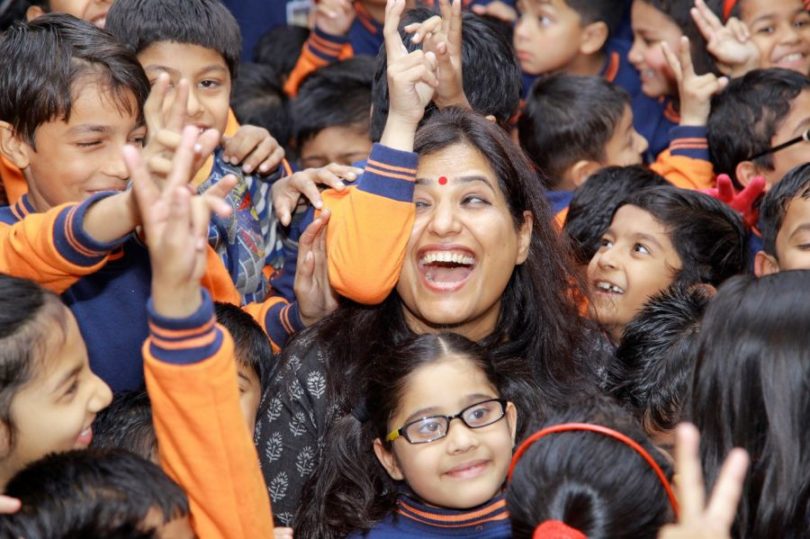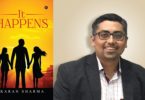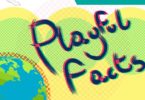Storytelling is a perfect medium to blend and integrate a love for stories, books, writing, poetry, puppetry, crafts, dramatics and toy designing. This is the core belief with which Seema Wahi – an innovative and experiential storyteller – took to storytelling. A NIFT alumni and a post graduate in English Literature, Seema is a Storyteller, a Story Coach, an Education consultant and a responsive facilitator. She designs and conducts Storytelling and Education related workshops for children and adults at schools and other organisations across the country.
Here are some excerpts from our chat with Seema.
Define yourself – the person, and the storyteller
I think the best way to define me is not to define myself at all. Yet, if I must, it would be a quintessential dreamer who could live on The Faraway Tree in The Enchanted Wood forever, and yet has the courage to walk the untrodden path with tenacity and persistence to turn her dreams into reality. An eclectic blend of mischief, seriousness, patience, impulsiveness and optimism, I live life fully. I view with wonder the beautiful tapestry woven by life’s ups and downs, shades of grey, love, affection, laughter, pain, despair, humour, satire. Being open to new adventures and experiences, I consider myself a life-long learner. I have diverse interests and am still discovering and exploring these. What marks me is that I view all living and non-living things with respect and compassion. I find fulfilment in creating emotionally safe spaces, where individuals are accepted without judgements, so that they can explore, learn, perform to the best of their abilities.
As a storyteller, I consider stories as the most powerful, and hence the best, medium to bring about personal and social transformation, and to bridge, bind and heal the world. I prefer adding layers to the stories to uncover deep-rooted beliefs, social conditioning and prejudices, and sow seeds of different possibilities. Apart from this, storytelling to me works at developing different levels at the same time- literacy and communication skills, reasoning, problem solving skills, critical and creative thinking.
The storyteller in me feels that each blade of grass, each leaf, every grain of sand, each stone or rock, each drop of water has a story to tell, if only we have the ears to listen. I started my journey as a storyteller eagerly wanting to tell stories to whoever would listen, and the journey taught me that an essential quality of a sensitive storyteller is to hone the eyes, ears and heart to listen to others- to the spoken word as well as what is unsaid and hone the ears, eyes and heart to listen to the silence.
I firmly believe that we may think that we choose stories to tell but in reality the stories choose us, as they want to be told through us. I love the thought that there is an idea fairy who whispers ideas for stories in our ears.
As a storyteller, I like to experiment with different tools and techniques- narration with voice modulation, enacting parts of a story, using puppets, telling the story through paper craft, using props as simple as a piece of paper or a fabric or accordion books/ story scrolls/ story cards etc. I also like to employ ‘the pause’ to heighten suspense and ‘unexpected outcomes’ to make the audience think deeper. I use stories to communicate effectively in other Education and Soft Skills related workshops. Sincere attempts to engage learners from different age groups- adults from 18-63 years and children between ages 3 to 16 years, have helped me gain an in depth understanding of different approaches and sensitivities required in planning, modifying and transacting content for different learners, and making learning experiential.
Making the audience feel like a part of the story and experience the story, is something which ignites me. I like to see the look of different expressions- wonder, enchantment in the eyes of the audience. My cherished moments are those in which the children and even adults, at times, look at me with a sparkle in their eyes wondering what magic she will cast today. I consider love and affection showered on me as my biggest treasure. It warms my heart to think that though one day I will be no more, the memories created through stories may still be cherished by the listeners.
What influenced you to become a storyteller?
A series of different experiences starting early in life through my love for books, stories, poetry and watching performances, deeply influenced me and set me forth on my journey. Throughout childhood, I remember describing events in great detail with a compulsive need to make the listener ‘see’ it happening. A few of my friends often remind me that I was preparing to be a storyteller and they are instrumental in letting me practice skills on them. Further, my boys – Dhruv and Paarth, who are 9 years apart, had reading and storytelling time even when they were babies. They loved listening to stories and I loved telling them. This resulted in their love for books while made me think more about taking cues from their observations and incorporating in my stories. I also used puppets and toys, which I designed in my own venture Enchanting World, while telling them stories. So in a way my children are instrumental in making me a storyteller as well.
Apart from this, attending workshops led by Cathy Spagnoli, Shahji and Anuradha (of Jodogyan) acted as a catalyst and evoked a deep desire to become a storyteller. I was also reminded of my history teacher in school, Mr.Kaushik, who never made us open the text book but presented the chapter in form of a story. As an instructional designer, I started writing story based lesson plans for Early Years Curriculum, and included how to tell stories in my Teacher Training workshops.
My mentor, Tushar Tamhane, encouraged me to take the final leap to take up storytelling as a professional. Hence I started ‘Our Story Circle’ in 2009. During the sessions with children, I observed that stories opened windows to understand the social conditioning, deep seated beliefs and prejudices. It also presented opportunity to present alternate ways of thinking and being. This led to writing reflections of story sessions and one of these – ‘Reflections on Storytelling Session – of “The Three Kittens by V. Suteyev”‘ was published by Eklavya (Sandarbh Issue 77) in 2011 and another by Pratham Books. This cemented my footing into storytelling.
Observing storytellers like Paro Anand, Ranjana Pandey, Geeta Ramanujam and Jeeva Raghunath at different spaces, and events like JumpStart and Bookaroo further inspired me.
Tell us about the story of your journey as a storyteller.
My first venture was Enchanting World where I designed, developed, manufactured and marketed soft toys which were also seen as learning aids for early childhood. One of the line of products developed was stories and puppet kit. This had me practicing and sharing how to use the puppets while telling stories.
Our Story Circle was my stepping stone into the space of storytelling. It started as a Summer Program for children from my home. The engagement of children and appreciation of parents was a heartening experience for a novice storyteller. As I delved into the craft and honed my skills, the scope of work grew to include story sessions for different age groups, developing and conducting story based modules and lesson plans. Further, I developed my own specific storytelling modules for adults – be it educators, college students, corporate, which I conducted at different cities, towns like Mumbai, Chennai, Delhi-NCR, Mandi, Ranipur, Indore, Kota, Kashipur to name a few.
The challenges included reaching out, marketing and promotions; finding a suitable space for a centre for storytelling in this city where steep rentals make it financially unviable. Another challenge was to grow professionally hence I packed my bags to go to Bangalore for a Certificate Course in storytelling from Kathalaya and am currently pursuing the Diploma in Storytelling conducted by Kathalaya.
Finally, one big concern was to getting to know like-minded people to collaborate with.
The last challenge got addressed an year back when I initiated a meet up for storytellers in the city. A few turned up. We were delighted to find resonance in each other and The Gaatha Company was born. It is a collective of storytellers who have chosen to work in collaboration. Even though we are yet to turn one, we have held a Gaatha Festival, an Author meet, conducted storytelling sessions for NGOs like Salaam Balak Trust, storytelling in nature at the Aravali Biodiversity Park in Gurgaon collaborated with Healing Forests and I Am Gurgaon, storytelling organized by a Sapient, storytelling for senior citizens organised by Samarth, and children of different age groups from toddlers to teenagers at different spaces.
What are the kind of audiences you work with?
I work with different kind of audience – children of all age groups from toddlers to 16 year olds (in rural and urban setting), college students, senior citizens, school leaders and educators, executives and employees in different sectors. As a part of Jaipur Literature Festival Outreach program, I also had the opportunity to work with differently abled children and young adults.
How do you add the element of individuality to your storytelling?
First of all, I must state that I share stories as this is what I love doing. I have found that comparisons are counter-productive. I believe that we storytellers are a rare but growing tribe. Once a well-known story teller gave me a wonderful piece of advice – “Observe different tellers not to compare, but to appreciate and learn at least one thing from each.” This has been my approach since then.
Yet, I could mention certain aspects which I see in my storytelling.
One of the important facets of my work is therapeutic storytelling which facilitates emotional healing. I also realize that stories work as a therapeutic experience not only for the listeners but also for the teller.
For example, one such session of a story “An Invisible Friendship Chair” with 13-15 years old, led to them to silently question in their minds the nature of friendship. It also led me to reflect on my own friendships. The story was followed by a QCT and these young adults amazed me with their depth of thought and emotion, honesty in reflections and sharing it with others. The authentic sharing led to a deepening of their friendships. While for me, I initiated a dialogue with a dear friend which resulted in clearing tiny misunderstandings which had crept in, which led to a deepening of friendship.
Layering the stories is fascinating for me, and through these layers I like to subtly challenge existing mind-sets and prejudices, question the validity of these, and suggest alternate ways of thinking.
I enjoy turning ordinary events (having a bad throat because of eating too many ice-creams) as well as bizarre experiences (visit to an emu farm where emu ran away with a slipper of my 2.5 year old) into tell-able tales and puppet shows.
Another technique I employ to engage listeners, is power of visualization- letting children or adults look at an empty space and visualize an imaginary object or person there, and then behaving as it really exists.
The stories which I share are mostly participative. I modify the stories after considering how to make connections and engage the audience.
Have the stories in your life influenced your style of storytelling and the way you use stories? How?
Our ‘inner story’ is influenced by the stories we hear, witness or experience right since our childhood. It is important to pause and reflect upon the story within. I often choose the story based on the theme or the emotion which would resonate with the audience. Using different styles of storytelling based on the nine rasas, I connect with the audience to bring out their latent emotions to enable them to introspect.
Any particular incident/anecdote from your workshops/sessions that is special to you?
Although there are many anecdotes I can share, let me share a recent one. During a three day Training at Barabanki (UP), I was sharing the story of Mrs. Mathur (an adaptation of Mrs.Thompson) to bring forth the influence of a teacher in shaping a child. Towards the end of the story, a young teacher Feroza (name changed) looked visibly shaken. As the story ended, there was absolute silence in the room and everyone seemed to have travelled to deep recesses of their own memories. Feroza’s colleague said that Feroza had lost her parents as a child and the story evoked those memories. I halted the session and we observed silence to acknowledge and honour the pain she would have gone through. After a while Feroza came forward and started sharing her life story. One by one the others followed. This was probably the first time they were sharing their lives openly. The workshop and topics to be covered could wait, but their personal stories couldn’t.
On the last day while reflecting on the workshop, the participants said that they would always remember the story of Mrs.Mathur and the influence of a teacher in making or breaking a child’s self-confidence. It changed the way they viewed their profession. They resolved to be more willing to build bonds with the children rather than scolding, punishing and labeling them.
Any story that you particularly love using?
Ah! What a difficult question… some of the stories I love telling are “The Golden Glow” (which is a joining of two different stories but a delicate thread), “A Boxful of Worlds” and “Drego loses his voice” (both written by me), The Invisible Friendship chair, Paper Play, Papplu the giant, Rupa the elephant, The Wisdom Seller, Pete the Cat and his white shoes, Gajapati Kulapati.
What is the scope for picking up storytelling as a full-time profession?
In today’s day and age, people have less time to spend with each other as they choose interacting with gadgets and focusing more on professional life. The breakdown of joint family and the advent of technology has led people into leading solitary lives and causes loneliness, depression and alienation from self and others. Storytelling creates a safe space for connecting with own self, with other people, and serves as a platform for authentic sharing. Now, more than ever, we need storytellers to help engage, enchant, enthrall people, to connect them to their own selves, to help heal and bind the world.
Apart from this, the power of storytelling in education needs to be completely explored. This could be one of the super specializations in storytelling, either as subjects taught through stories or stories for different age groups, for which we need many more storytellers dedicated and persistently working independently, and also helping educators to hone their skills.
Your advice to those who want to pick up storytelling as a profession.
The best way to enjoy a story is to see yourself as a medium to let the story flow to listeners. Respect the audience and look for ways to create an emotional connect with them. Accept and honor divergent views and present these in a non-judgmental way. And don’t end the story by asking the moral of the story. The path maybe offbeat, but the walk is worth it.
—
—
Don’t Miss: We love storytellers as much as we love storytelling. On Tell-a-Tale, we’ve featured a lot of talented storytellers, in the past.
Are you a Storyteller? If you’re a storyteller who is actively pursuing storytelling and would like to be featured in this column, drop us a mail at contact AT tell-a-tale.com or reach out to us via Facebook.






I am a Shadow puppeteer and storyteller.